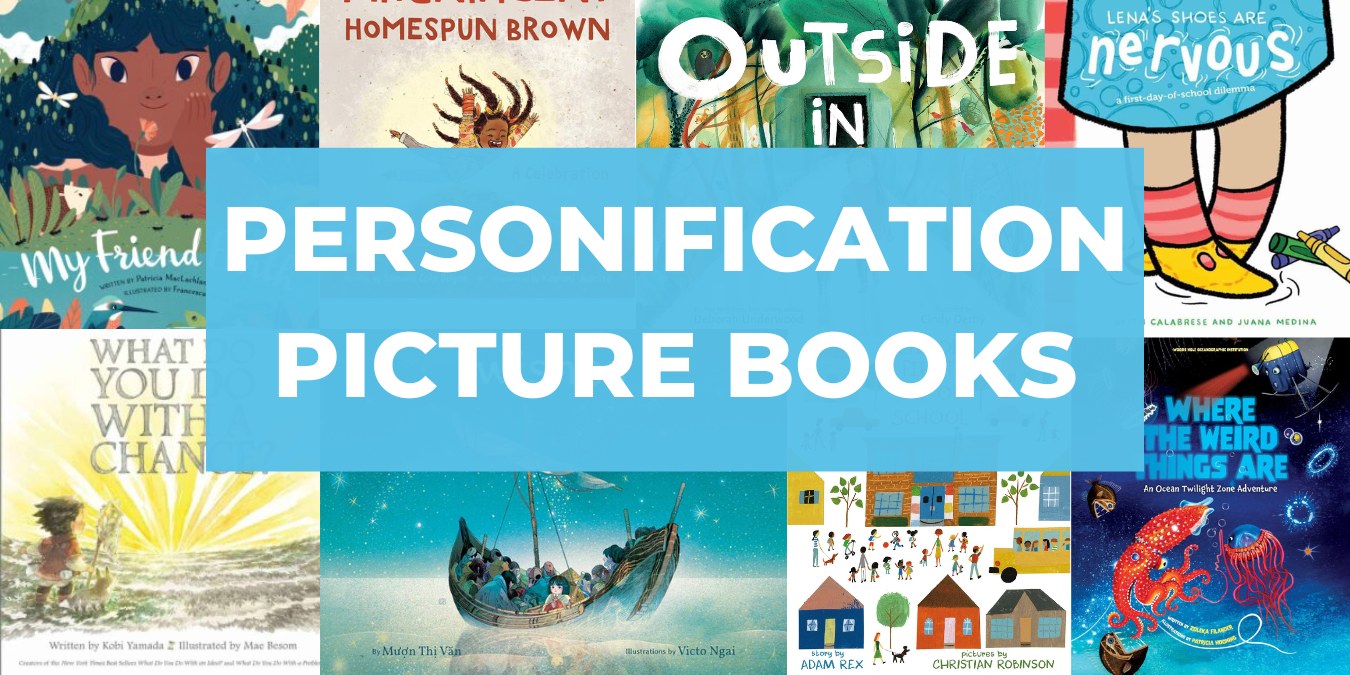Want some personification examples? I’ve got you covered with beautifully written mentor text picture books that you can use to teach children about personification.
First, what is the definition of personification? Personification is a literary device when writers give human qualities, hunan characteristics, and human thoughts to an inanimate object or animal. It’s a form of figurative language often used in poetry but also in prose, too.
For example, imagine that the wind can speak and act like a human. Having the wind talk or feel human emotion is an example of personification.
Use these picture books as mentor text examples to teach the definition and concept of personification to kids. Reading personification in literature will help growing writers to understand that personification is a type of metaphor they can use it in their own writing.
If you’re a teacher, these books are perfect for writing workshops, especially if your students are writing poems. Use these prose books to model and inspire growing writers to try using personification in their writing.
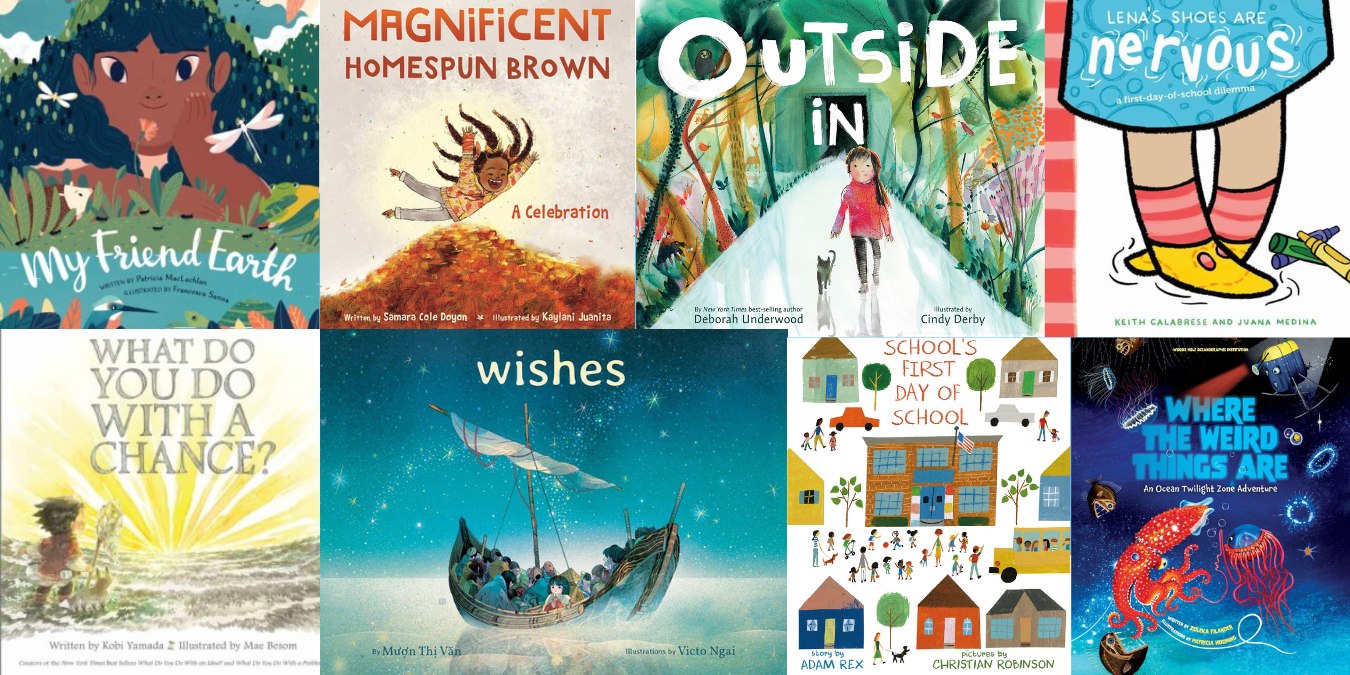
If you need a memory trick to teach the meaning of this word to kids, point out to kids how the word PERSONIFICATION includes the word PERSON in it to help them remember the definition.
Read one or more of these picture books aloud to children. Ask them to find examples of non-human things speaking in everyday speech or feeling human feelings.
Ask kids what non-person thing was personified? How did they know? After sharing examples like sunflowers who whisper to each other, explain how they can use the story to inspire their own made-up stories.
You’ll find stories with things like the NIGHT being personified or even a SPOON. Fun, right!?
When writing using personification, start looking for objects within a category like household items, nature, animals, weather, food, things in the ocean, or classroom objects.
After you’ve chosen a category and a noun such as a pencil, ask kids to think and write about this object or animal’s point of view? What will the object or animal feel? Help writers get started inventing a plot that includes a problem and solution. Provide many personification examples to get children started. Model asking yourself about the object or animal’s point of view and writing it down.
PRINTABLE LIST
Picture Book Personification Examples
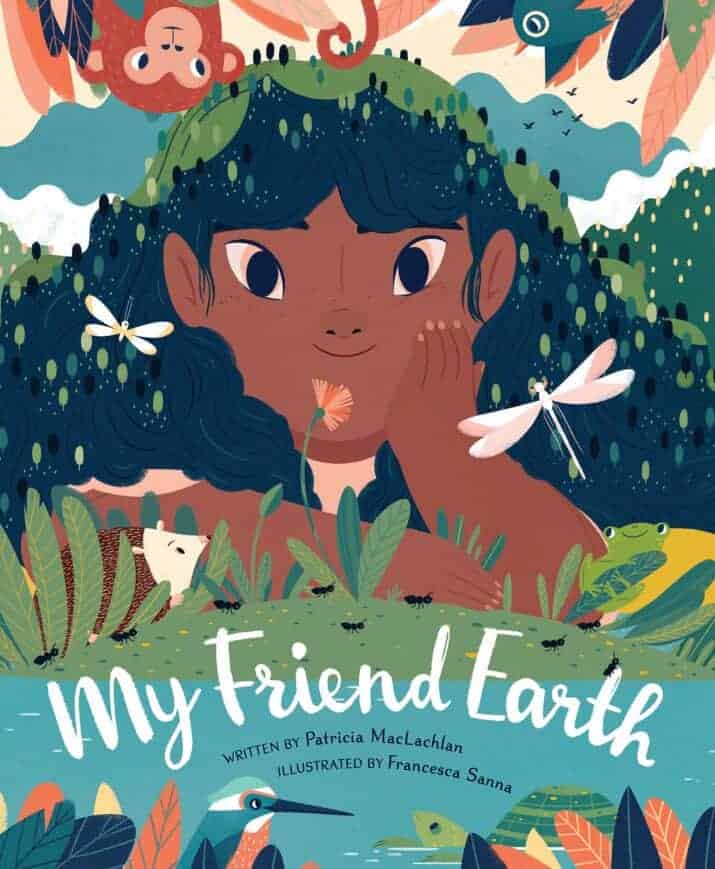
My Friend Earth by Patricia MacLachlan, illustrated by Francesca Sanna
A personified Earth is a lovely, dark-skinned girl who wakes up for spring. Captivating lush, layered illustrations and die-cut-out pages plus lyrical text intertwine to create a dazzling reading experience that celebrates the Earth’s seasons and her care for its creatures. “Under the white — the silent seed is cradled in the dark soil. Watching.“
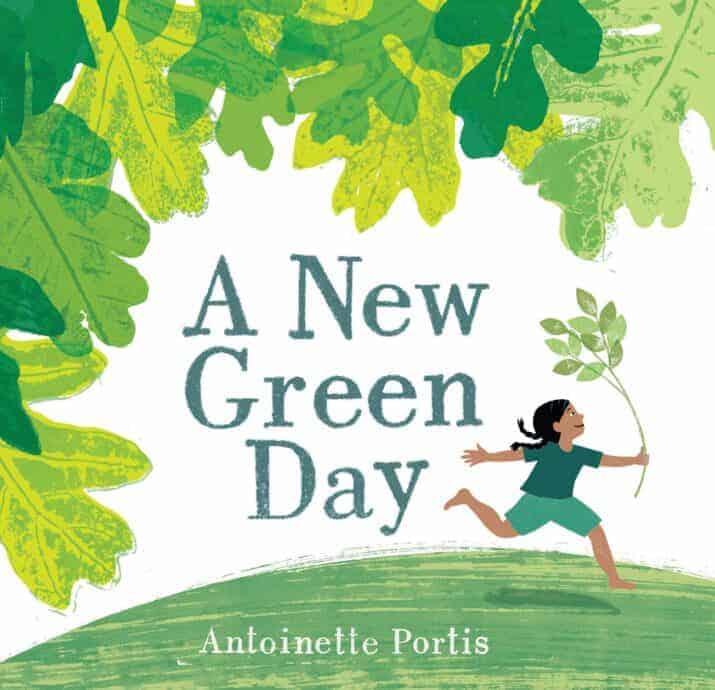
A New Green Day by Antoinette Portis
This story includes wonderful use of personification as nature’s elements speak to kids… Sunlight says, “Morning lays me on your pillow, an invitation, square and warm. Come out and play!” Snail says, “I scribble on the walk in glistening ink. Read all about my nighttime travels.” What will leaf, inchworm, tadpole, pebble, cloud, rain, lightning, mud, shadow, night, and cricket share with you? Read what each one says and guess who said it before you turn the page. Delightful!
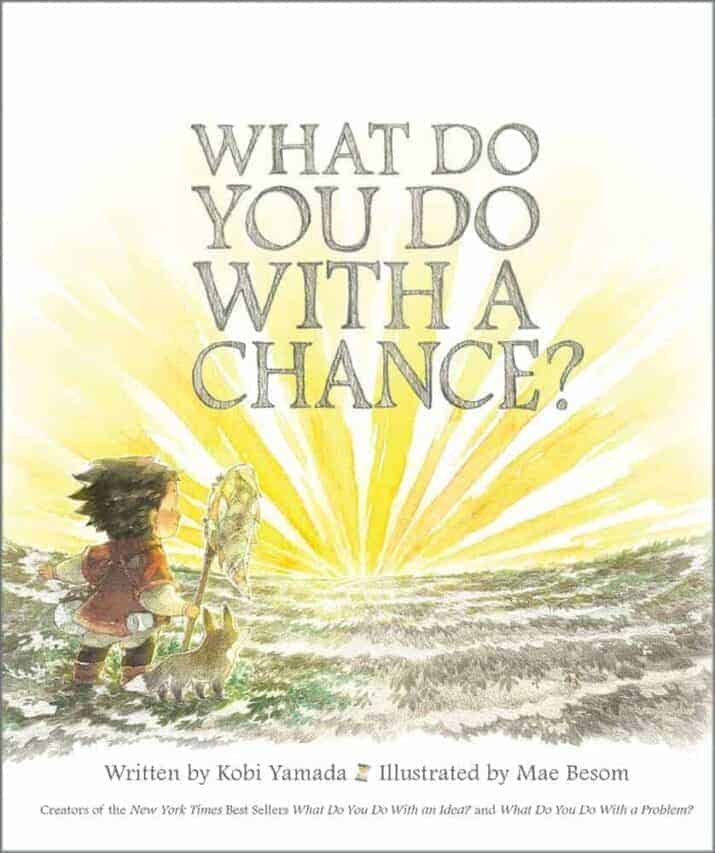
What Do You Do With a Chance? by Kobi Yamada, illustrated by Mae Besom
The author personifies the concept of a “chance” as a yellow origami butterfly. When the boy gets a chance, his fear makes him ignore the chances that come his way. Until he realizes what he’s missing…”I now see that when I hold back, I miss out. And I don’t want to miss out. There’s just so much I want to see and do an discover. // So what do you do with a chance? You take it . . . because it just might be the start of something incredible.“
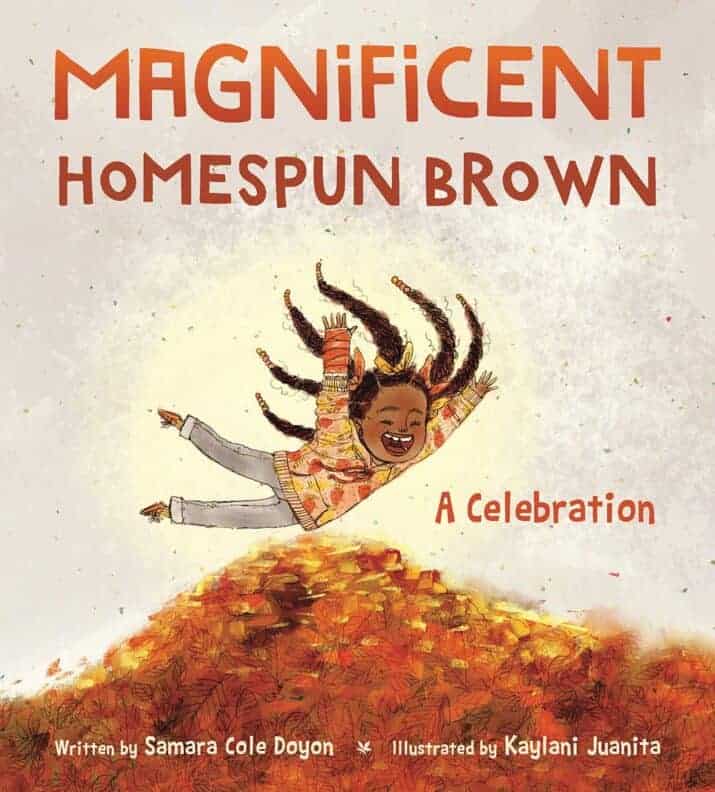
Magnificent Homespun Brown: A Celebration by Samara Cole Doyon, illustrated by Kaylani Juanita
Lyrical, figurative language (filled with similes, personification, and vivid imagery) not only celebrates people of color living life fully but transports readers into scenes rich with sensory imagery. “Deep, secret brown. Like the subtly churning river currents playfully beckoning me through my grandmother’s kitchen window, winding steadily past banks of tall grass and wild rose bushes.” Or “Feathery brown. Like the jagged shadows of hemlock branches thrown over me and Daddy on a gentle mountain hike.” A stunning, joyful tribute.
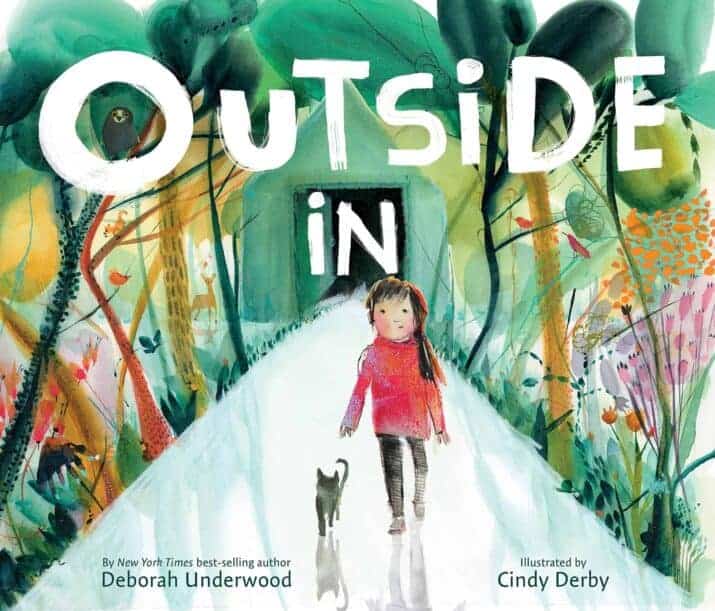
Outside In by Deborah Underwood, illustrated by Cindy Derby
Outside In thoughtfully looks at our relationship with nature. Sometimes we forget about Outside but Outside reminds us of sunset and shadows and birds…”Outside sings to us with chirps and rustles and tap-taps on the roof.” Celebrate nature with this lyrical ode to all that Outside gives us. Beautifully written with evocative watercolor illustrations, this gem is one you don’t want to miss.
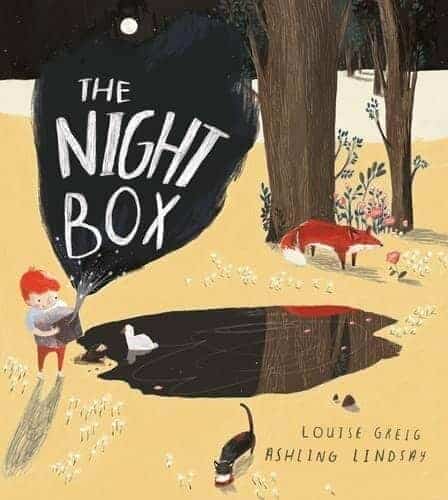
The Night Box by Louise Greig, illustrated by Ashling Lindsay
“Day is yawning” begins this story about day and night personified with human behaviors. When the boy unlocks the Night Box, Day goes to rest and Night comes out to play. Night welcomes the nocturnal animals, gives a moon to a pond, a branch to the owl, and for Max, Night makes sure he has a soft, warm bed. Later, when Night falls asleep, Max opens the box and Day sweeps back out. “Day breathes into the leaves, quiet flies out of the trees, yellow rises from the rooftops, and a new song begins.” Absolutely lovely.
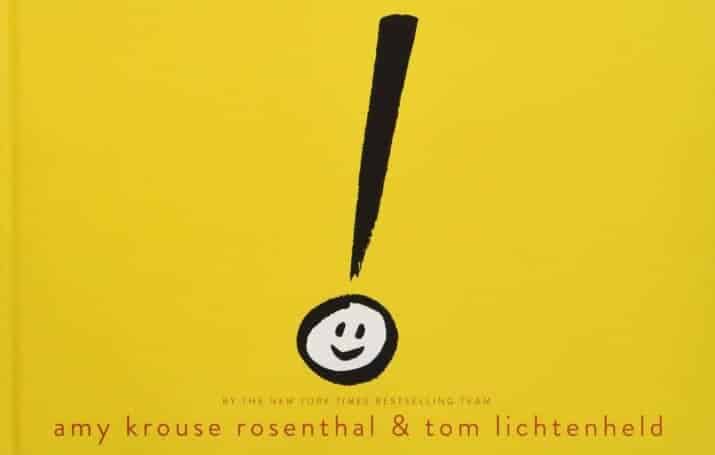
Exclamation Mark by Amy Krouse Rosenthal, illustrated by Tom Lichtenheld
It’s not easy being seen. Especially when you’re NOT like everyone else. Especially when what sets you apart is YOU. Sometimes we squish ourselves to fit in. We shrink. Twist. Bend. Until — ! — a friend shows the way to endless possibilities. In this bold and highly visual book, an emphatic but misplaced exclamation point learns that being different can be very exciting! Period. I love how the author personifies punctuation!
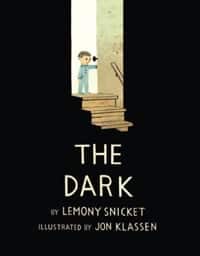
The Dark by Lemony Snicket, illustrated by Jon Klassen
Most kids can relate to young Laszlo’s fear of the dark. In this unique picture book, the dark is an actual thing that lives in the basement, hides in the closet, and waits in the corners. One night, the dark comes to Laszlo’s room and speaks to him. Yikes! The dark wants to show Laszlo something. He shows Lazlo a nightlight in the basement. Now that Lazlo has a light, the dark never bothers Laszlo again.
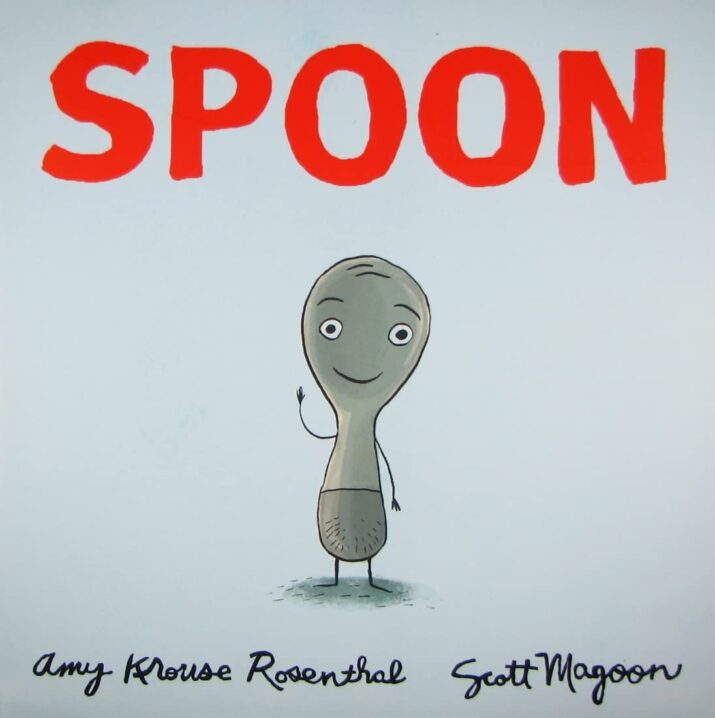
Spoon by Amy Krouse Rosenthal, illustrated by Scott Magoon
Spoon feels “bent out of shape” lately. His friends seem to have more exciting lives than him — like Knife who can cut and spread, and Fork who goes everywhere practically, and Chopsticks, who are so exotic. When Spoon’s mom reminds him of the wonderful things about being a spoon — diving into a bowl of ice cream, clinking against a cereal bowl side, and twirl around in a mug, Spoon feels much better about who he is. Not only is this a wonderful picture book mentor text for teaching personification but it contains a valuable life lesson, too.
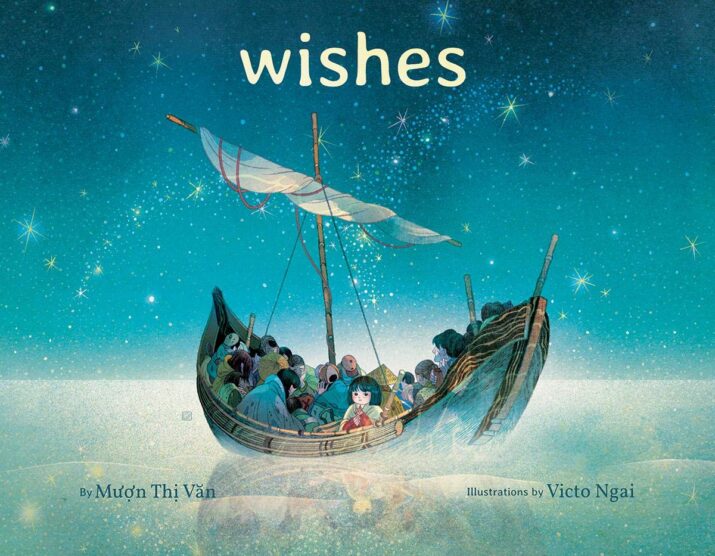
Wishes by Muon Thi Van, illustrations by Victo Ngai
Gorgeous illustrations and lyrical, personifying text work together in beautiful harmony to narrate the bittersweet goodbye as a family leaves their Vietnamese village and travels by boat. They get picked up by a bigger boat and eventually arrive at a new city, a new home. It’s an important story arc of sad endings, challenging middles, and hopeful beginnings with room for inference and connection about the themes of family and feelings and the topic of immigration. “The light wished it was brighter. // The dream wished it was longer. //The clock wished it was slower.“
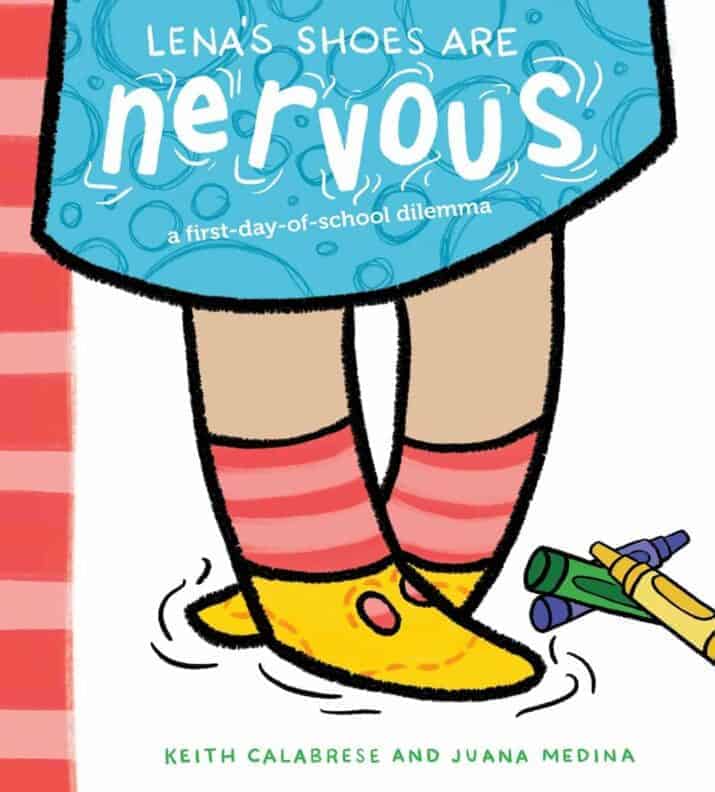
Lena’s Shoes Are Nervous (A First-Day-of-School Dilemma) by Keith Calabrese, illustrated by Juana Medina
Lena’s shoes are nervous about going to school but her dress is feeling outgoing. Then, Lena figures out that her headband can talk to her shoes. “The shoes say that school is big and loud and different and they’d really rather not go. / The headband is a good listener and understands.” The headband reminds the shoes of other times they all were scared and also brave. And that things worked out. Even though her shoes still feel a little nervous, they all decide to be brave. And Lena is proud of them!
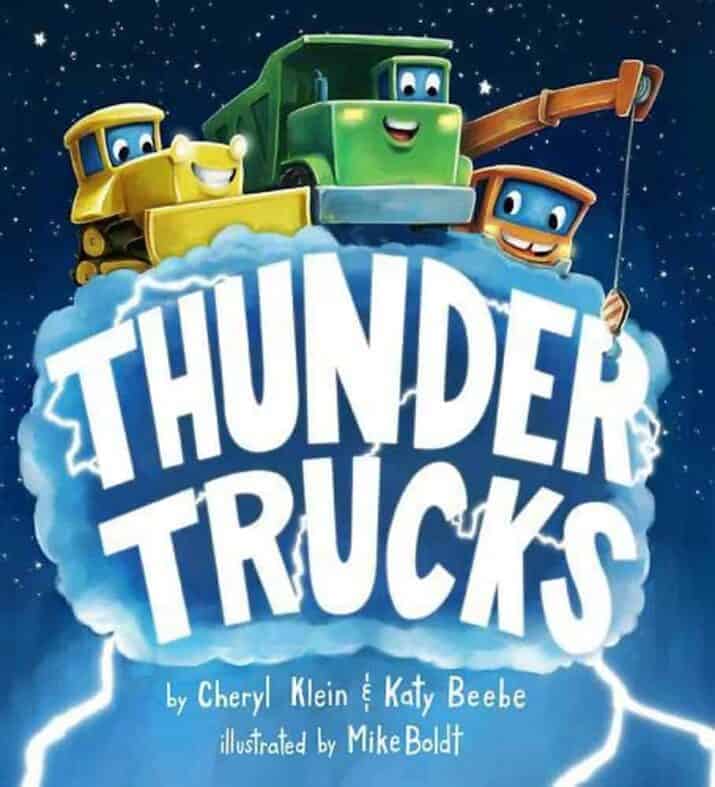
Thunder Trucks by Cheryl Klein and Katy Beebe, illustrated by Mike Boldt
Creative and fun! These Thunder trucks live in the clouds and make the storms: thunder, rain, hail, lightning, and big snow. Besides being an engaging story, it teaches personification! Read how the Dump Truck bustles in with a crash, tilting her dumpster bed up, up, up to pour the hailstones thump, thump, thump. “Thunder Trucks loud. Thunder Trucks strong. Thunder Trucks moving this storm along. The Firetruck makes lightning. The Big Rigs makes Thunder. They divvy it up and roll out so the whole sky rumbles with power and pride.”
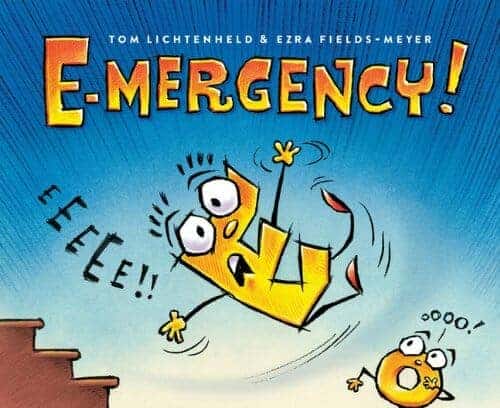
E-mergency by Tom Lichtenheld, illustrated by Ezra Fields-Meyer
Remember Shark vs. Train? Well, this punny book is by the same author and is even more clever. When E takes a tumble down the stairs, in order for E to heal, everyone must stop using her in all their words. O (who is so well-rounded) takes her place, making this book hilarious and quite challenging to read out loud! AftOr all, wO usO thO lOttOr a lot! But E doesn’t heal. Is someone still using the letter E? Like THE NARRATOR!?

Little Pea by Amy Krouse Rosenthal, illustrated by Jen Corace
Little Pea is supposed to eat his candy! He must force down a few bites if he wants dessert, which is spinach! This is a funny example of a situation in reverse than readers would expect.

Orion and the Dark by Emma Yarlett
“Mom, this is such a good book,” my 10-year-old shared, handing it to me. Sure enough, she was right for the sweet friendship with the formerly scary DARK and the boy named Orion. We loved the captivating collage-like illustrations in this story that humanizes the dark making him a kind and adventurous friend to Orion, who was downright terrified of the DARK before. But one night, the Dark came to visit. The Dark wasn’t at all what Orion expected. Now that the Dark is his friend, Orion isn’t scared.
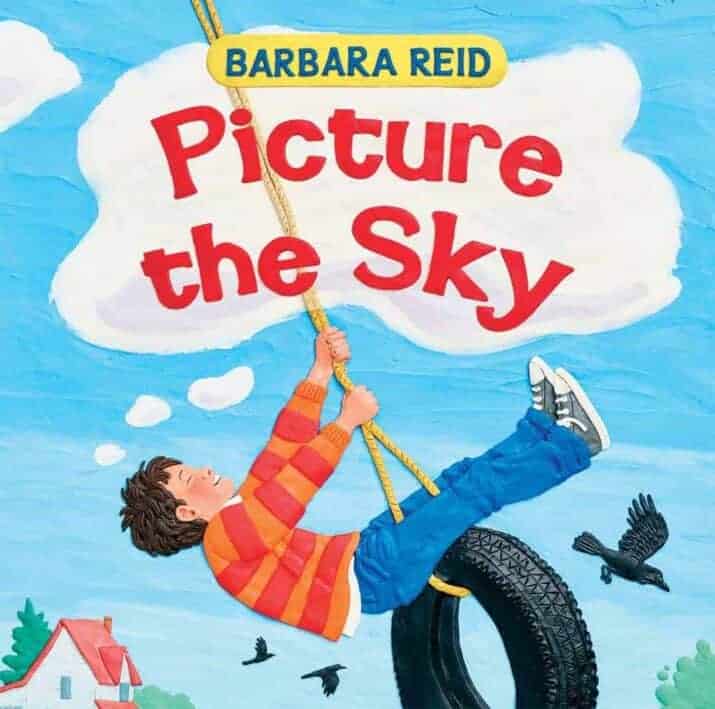
Picture the Sky by Barbara Reid
The best thing about this book is the three-dimensional, eye-catching artwork. But the text is also impressive — with how the author personifies the sky and gives readers metaphors that make us see the sky differently. Teachers use this personification picture book as a writing prompt.
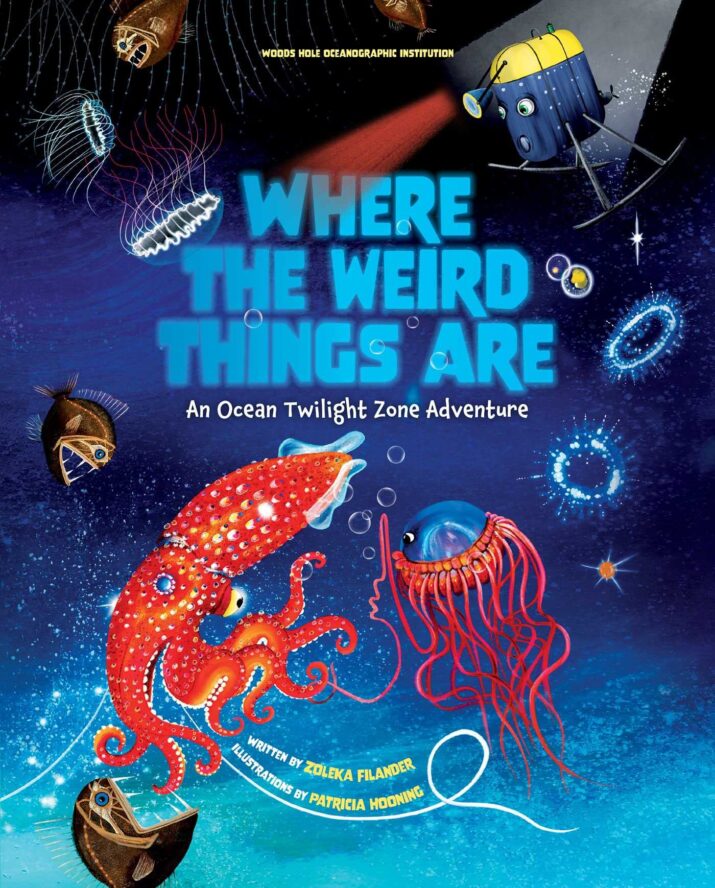
Where the Weird Things Are: An Ocean Twilight Zone Adventure by Zoleka Filander, illustrated by Patricia Hooning
A personified underwater explorer robot named Meso narrates his adventure deep in the ocean. He speaks to the creatures he meets, and they tell him about themselves. Filled with lots of banter and dialogue, the result is enjoyable and playful while being informational.
Can you think of more personification examples in books or your own writing?
What are 3 examples of personification?
What is personification and examples?
According to Literary Devices, personification is a figure of speech in which a thing, idea, or animal is given human attributes. See above for examples.
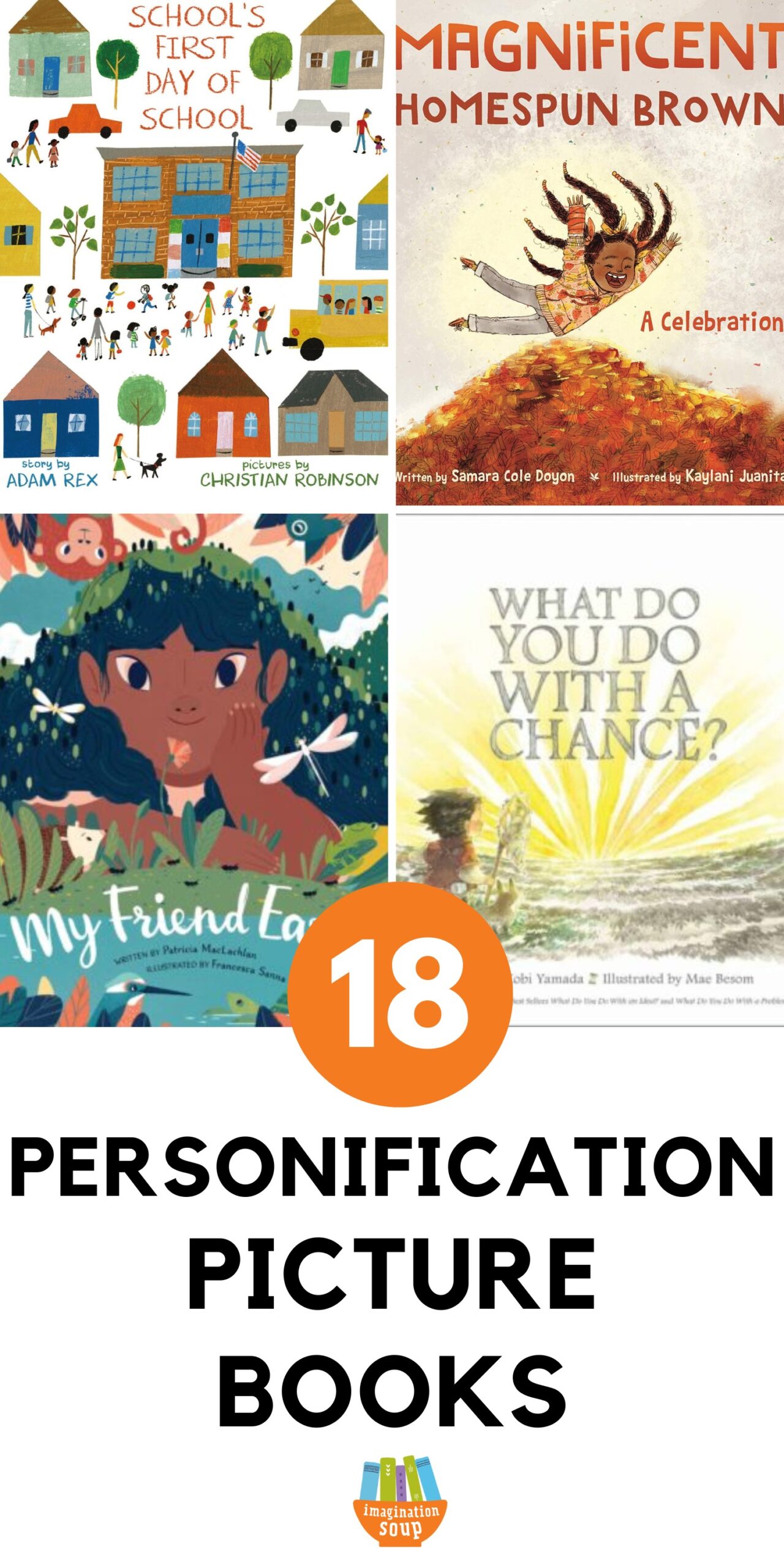
KEEP READING
Mentor Texts to Teach Description
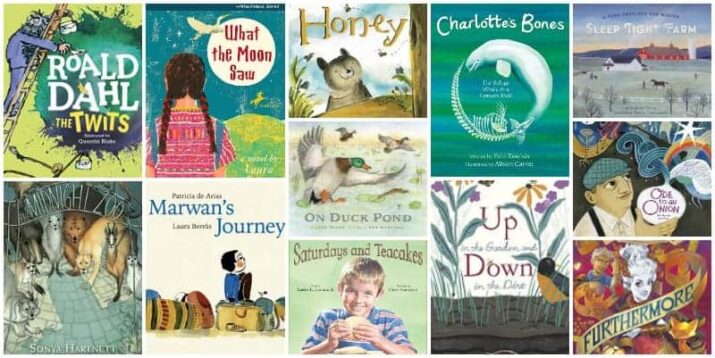
Vivid Verb Mentor Texts
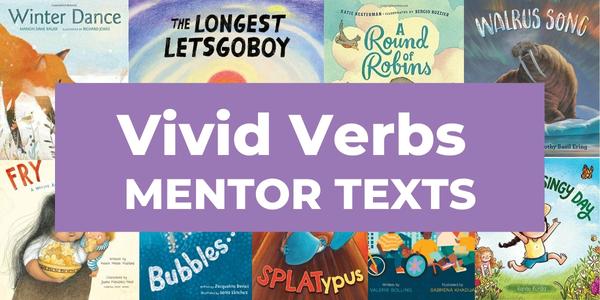
Picture Books to Teach Onomatopoeia
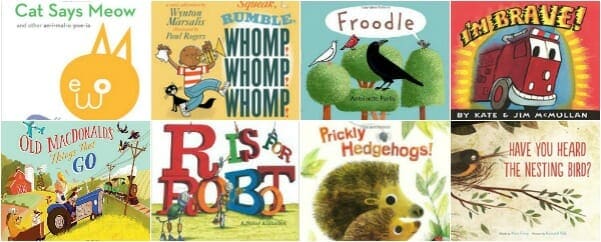
All Mentor Text Book Lists for Literacy Instruction

 PARENTING TIPS
PARENTING TIPS PREGNANCY
PREGNANCY BABY CARE
BABY CARE TODDLERS
TODDLERS TEENS
TEENS HEALTH CARE
HEALTH CARE ACTIVITIES & CRAFTS
ACTIVITIES & CRAFTS